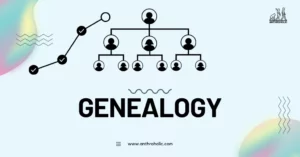AI Answer Evaluation Platform Live Now. Try Free Answer Evaluation Now
Skeletal Changes Due to Erect Posture in Primates and its Implications
One of the unique features that distinguish primates, particularly humans, from other mammals is the ability to maintain an erect or upright posture. The transition from quadrupedal to bipedal locomotion necessitated significant evolutionary adjustments in the skeletal structure of primates. A series of structural changes were implemented in the spine, pelvis, lower limb bones, and feet to enable bipedalism.

Evolution of Upright Posture in Primates
Early Primates and Locomotion
Early primates were primarily arboreal, utilizing their limbs for grasping and navigating through tree branches. Their skeletal structure evolved to maximize flexibility and balance, enabling them to move efficiently in a three-dimensional environment. However, the evolutionary journey from tree-living to ground-dwelling required significant skeletal changes to adapt to a terrestrial lifestyle.
Emergence of Bipedalism
The process of bipedalism in primates is believed to have evolved in stages, beginning with the partial bipedalism observed in Australopithecus—an early hominin genus—to the fully erect posture found in Homo sapiens. Key changes to the skeletal system included modifications to the spine, pelvis, and lower limbs.
Skeletal Changes Facilitating Erect Posture
Changes in the Spine
The transformation to upright posture required essential modifications in the vertebral column. Notably, the human spine exhibits a double curvature or “S-shape” that helps in balancing the body’s weight over the feet while standing or walking.
- Lumbar Curve: The lumbar curve of the spine, which is convex anteriorly, helps in balancing the trunk over the lower limbs, thereby promoting stability during erect posture.
- Thoracic Curve: The thoracic curve, which is convex posteriorly, assists in accommodating the thoracic organs.
In contrast, the spines of quadrupedal primates, such as chimpanzees, have a single gentle curvature.
Adjustments in the Pelvis
The shift to erect posture significantly altered the shape and structure of the primate pelvis.
- Broad, Short Shape: The human pelvis is relatively broad and short, providing a stable platform for supporting the trunk’s weight and a more extensive attachment area for gluteal muscles, which are crucial for maintaining balance in the erect position.
- Reorientation of Ilium: The reorientation of the ilium (the uppermost and largest bone of the pelvis) in hominins allows the gluteal muscles to function as hip abductors, facilitating bipedal walking and running.
Lower Limb Modifications
Crucial adjustments in the lower limbs were also needed to sustain an upright posture.
- Lengthening of Lower Limbs: Hominins developed longer lower limbs relative to body size, enhancing stride length and efficiency during bipedal locomotion.
- Valgus Angle: Humans possess a “valgus angle,” where the femur angles medially from the hip to the knee. This angle brings the body’s weight closer to the midline, improving balance during bipedal movement.
- Robust Calcaneus: Humans have a robust calcaneus or heel bone, facilitating the transmission of body weight from the heel to the rest of the foot.
| Characteristics | Quadrupedal Primates | Bipedal Hominins |
|---|---|---|
| Spine Shape | Single gentle curve | Double or “S” curve |
| Pelvis Shape | Long, narrow | Broad, short |
| Lower Limbs | Shorter relative to body size | Longer relative to body size |
| Valgus Angle | Absent or minimal | Present and pronounced |
| Calcaneus | Less robust | More robust |
Implications of Erect Posture
Evolutionary Implications
The transition to an upright posture provided several evolutionary advantages.
- Energy Efficiency: Bipedal locomotion is energetically more efficient than quadrupedal movement, allowing longer travel distances in search of food and mates.
- Free Hands: Erect posture freed the hands for tool use, manipulation, and carrying food or infants, which could have facilitated social and cultural development.
- Visual Surveillance: Standing upright could have provided early hominins a better vantage point to watch for predators or spot distant resources.
Biomechanical Implications
Despite its benefits, the erect posture also posed biomechanical challenges.
- Spinal Load-Bearing: The S-shaped spine must bear the body’s weight and the forces generated during locomotion, which can lead to various spinal disorders such as herniated discs and spondylosis.
- Risk of Falls: The shift of the body’s center of gravity upwards increases the risk of falls, which can result in injuries.
Health Implications
Modern humans are facing health issues partly linked to our bipedal nature.
- Lower Back Pain: Lower back pain is a widespread health concern, which could be attributed to the load-bearing function of the lumbar spine.
- Osteoarthritis: The increased pressure on the knee and hip joints due to bipedalism can lead to the degeneration of joint cartilage, resulting in osteoarthritis.
Conclusion
The transition to erect posture in primates marks a significant milestone in evolutionary history, underpinning many human characteristics, from energy-efficient travel to tool use. Despite the benefits, it also introduces unique biomechanical and health challenges. As we continue to evolve and adapt to our environment, understanding these skeletal changes and their implications can provide valuable insights into human evolution and health.
References
- Lovejoy, C. O. (1988). Evolution of human walking. Scientific American, 259(5), 118-125.
- Latimer, B., & Lovejoy, C. O. (1990). The calcaneus of Australopithecus afarensis and its implications for the evolution of bipedality. American Journal of Physical Anthropology, 82(1), 13-23.
- McHenry, H. M. (1992). Body size and proportions in early hominids. American Journal of Physical Anthropology, 87(4), 407-431.
- Schultz, A. H. (1961). Vertebral column and thorax. Primatologia, 4, 1-66.
- Ward, C. V. (2015). Postural evolution in primates: The evidence from the lumbar region, pelvis and hindlimb. In Evolution of the Vertebrate Spine (pp. 29-54). Palgrave Macmillan.



